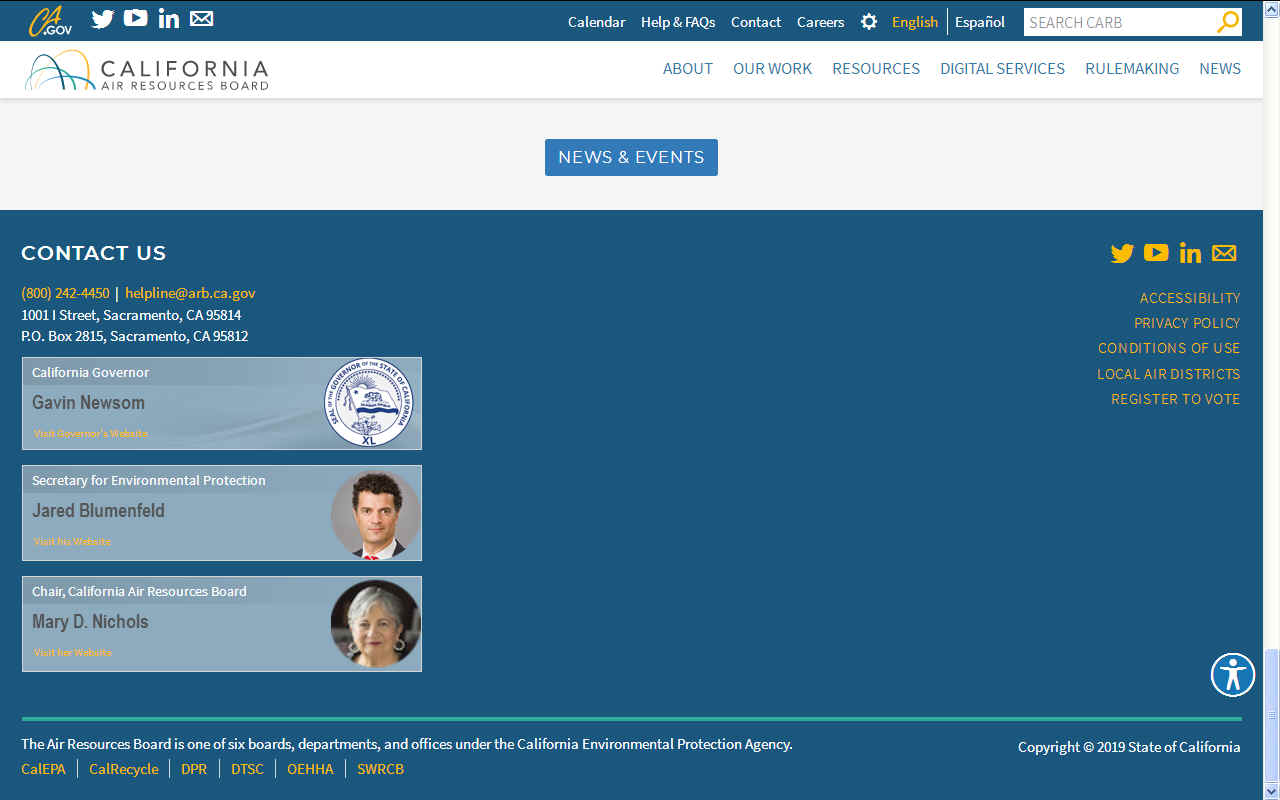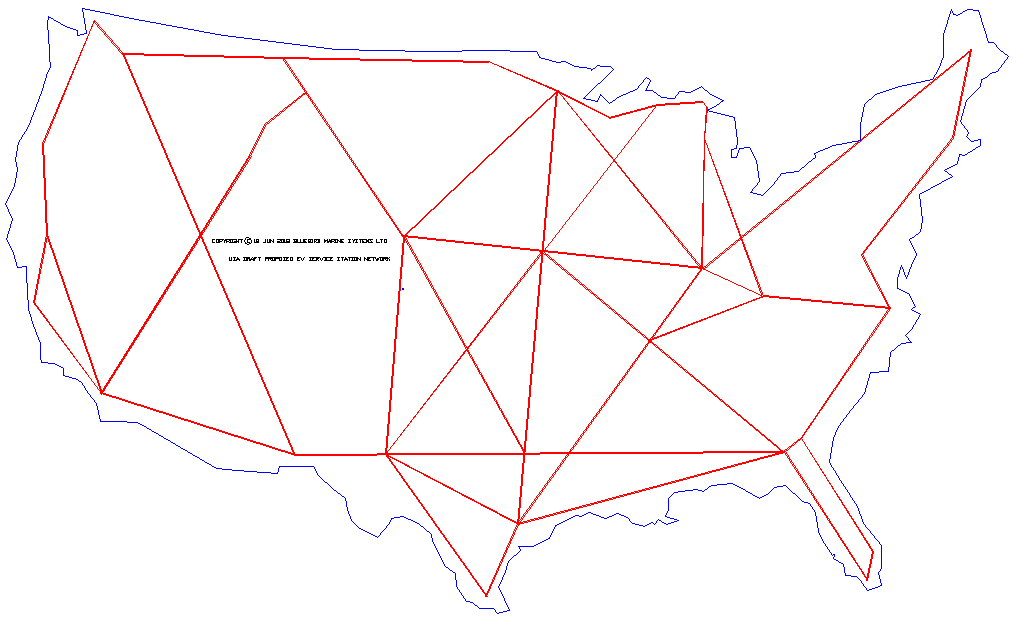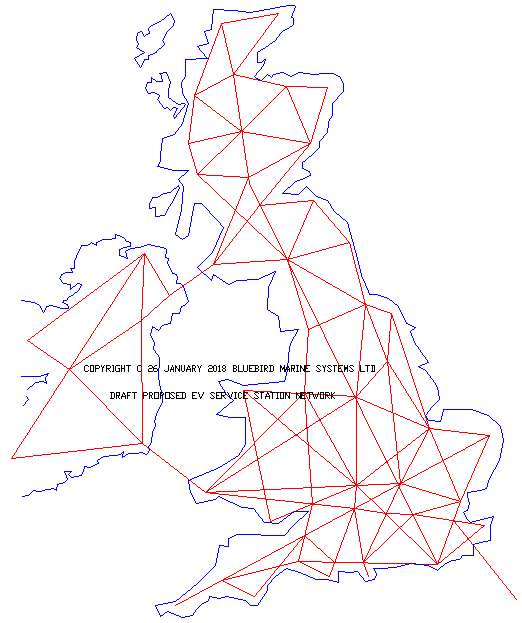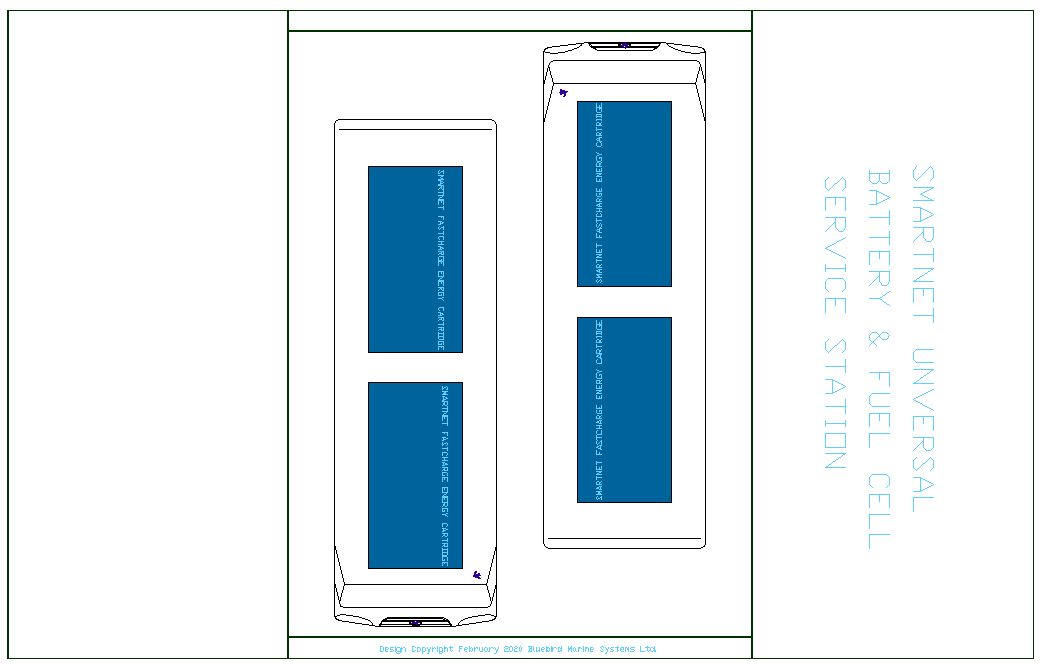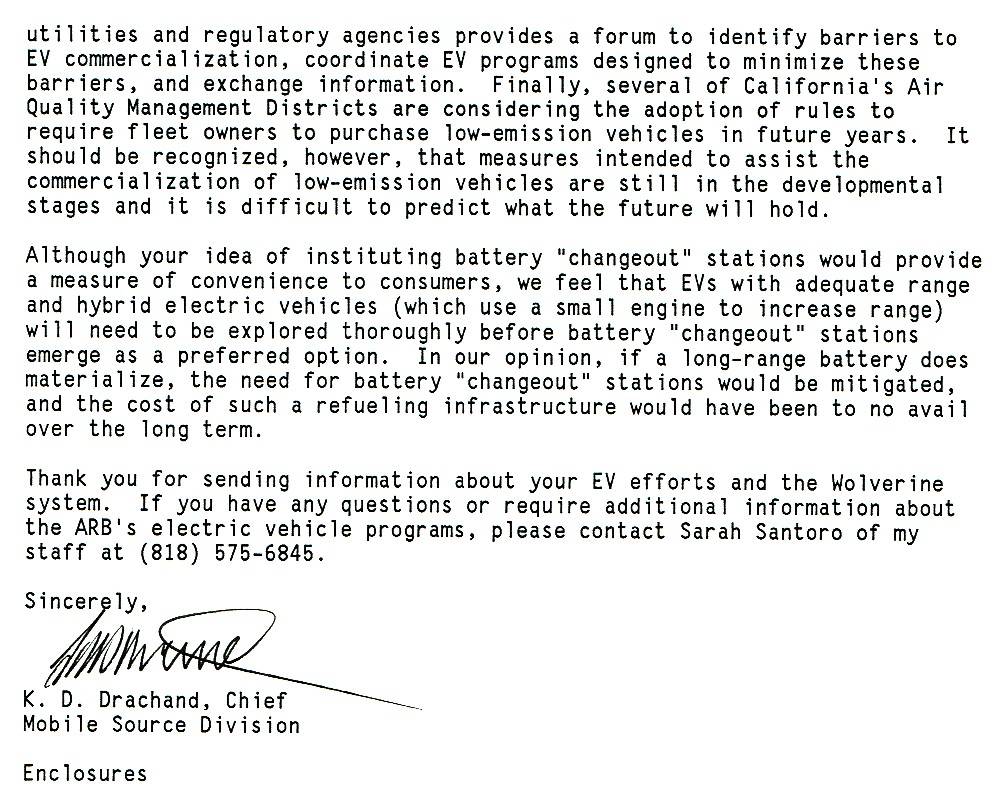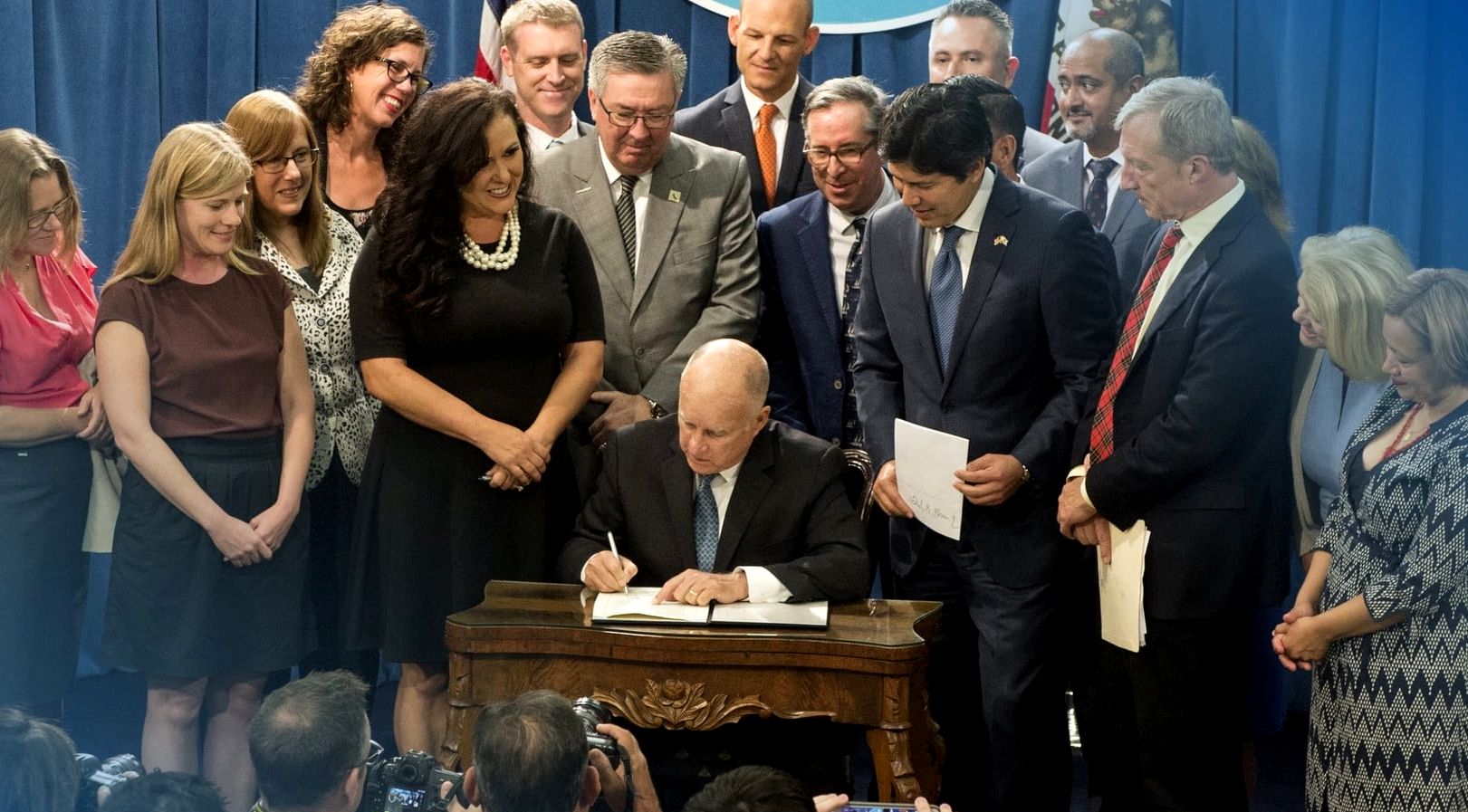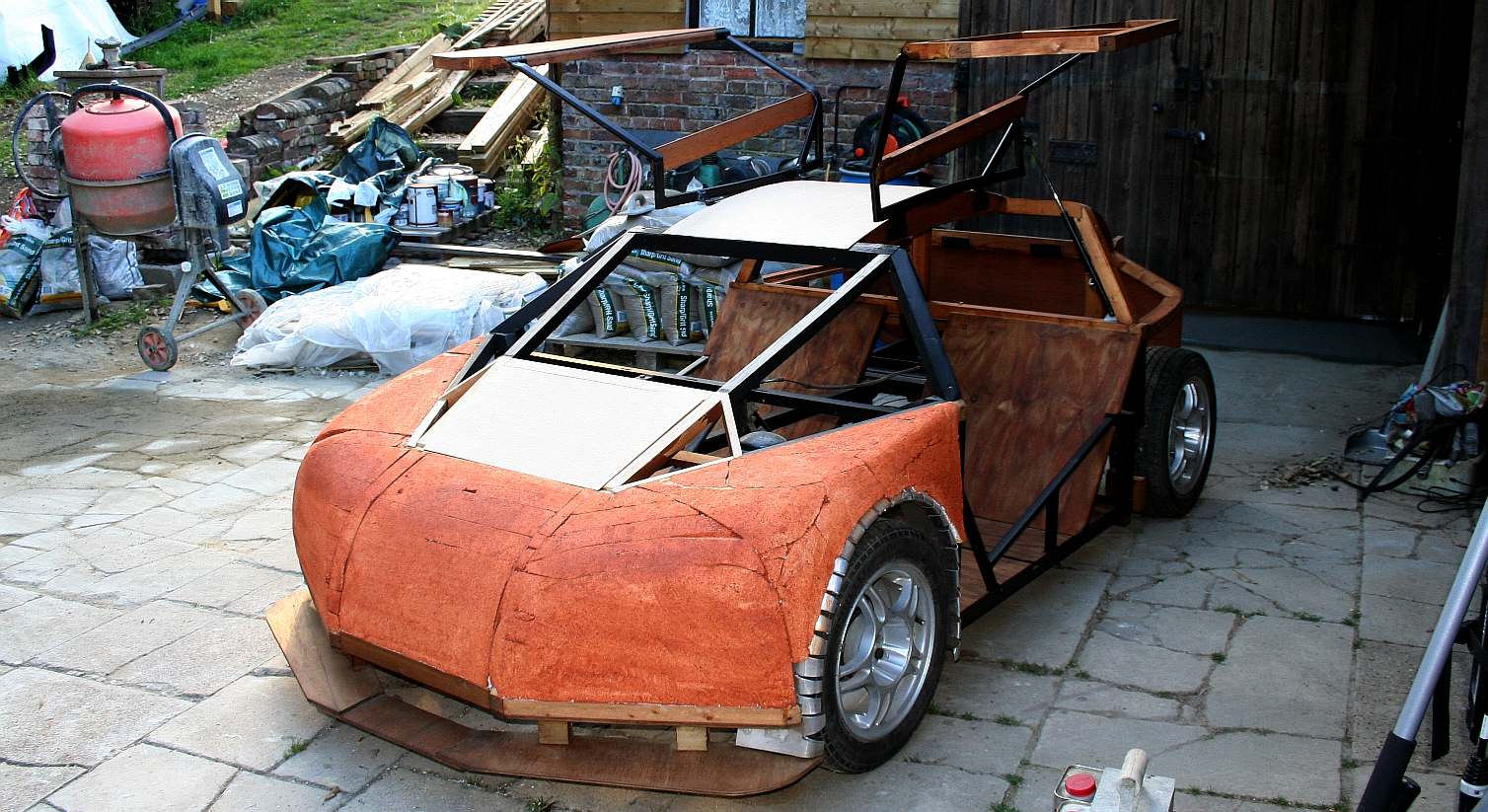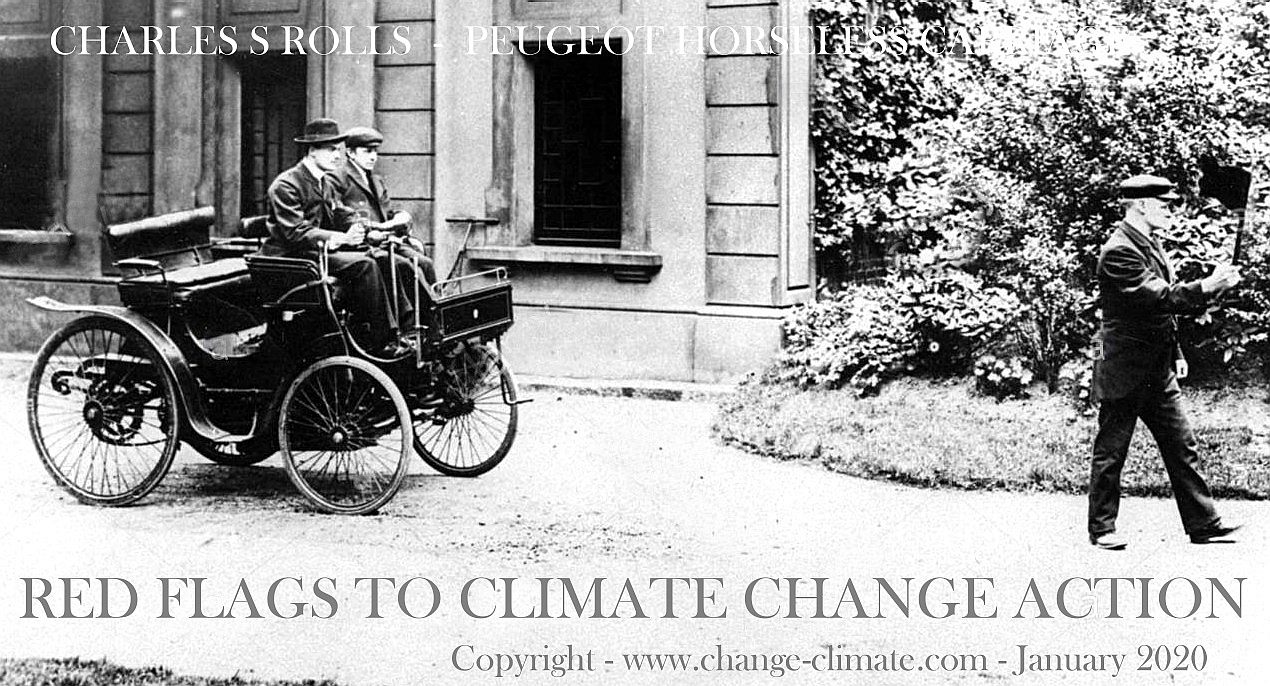|
CARB CALIFORNIA AIR RESOURCES BOARD
Please use our A-Z INDEX to navigate this site
|
In 1992 a British concern wrote to the then Governor, Pete Wilson, about an instant recharging system for electric vehicles using low cost, flatpack, service stations and cars with inbuilt loaders that could lift and install a battery cartridge themselves - even without the assistance of any (low cost) service station.
The cars would in effect be self-serving vehicles. But to that self serve capability, the inventor added a cyclic charging facility for energy providers, which also provided a battery cartridge on-demand - so that the self-service cars, vans and trucks, could then conveniently pick up a freshly charged cartridge, having dropped off their own. The surrendered cartridge then went back into the cyclic charging facility.
A really simple system, where simplicity is best - and a lot cheaper than digging up all those roads and pavements to install plug in charging points.
The writer was surprised then to receive a reply telling that California was not interested in exploring this possible solution, but would rather wait for a "Super Battery" while thousands of their residents suffered lung and other respiratory problems, and of course cancer issues, where the carcinogenic smog they were suffering from is held to be extremely dangerous to humans.
Twenty-six years later and California is no longer sitting on the fence - having accepted that there is no "Super-Battery" they are pushing for fast charging points. Climate change has reached a crisis situation while the Board twiddled their thumbs, no doubt charmed by auto-maker lobbyist dollars as to the wisdom of doing nothing while the health of this enormous State suffered. They could have had a completed infrastructure ten years ago - if there had been the political will. Instead, it is argued, they virtually murdered thousands of their citizens, failing to act as per their Duty of Care.
CLIMATE
EMERGENCY
(1) experience outsized risk because of the close proximity of the community to environmental hazards and stressors, in addition to co-location with waste and other sources of pollution;
(2) are often the first exposed to the impacts of climate change; and
(3) have the fewest resources to mitigate those impacts or relocate, which will exacerbate preexisting challenges;
Whereas, according to Dr. Robert Bullard and Dr. Beverly Wright, “environmental and public
health threats from natural and human-made disasters are not randomly distributed,”
therefore a response to the climate emergency necessitates the adoption of just community
transition policies and processes available to all communities, which include policies and processes rooted in principles of racial and socio-economic equity, self-determination, and
democracy, as well as the fundamental human right of all people to clean air and water,
healthy food, health care, adequate land, education, and shelter;
Whereas climate change is a threat
multiplier —
Whereas, even with global warming up to 1.5 degrees Celsius above pre-industrial levels, the planet is projected to experience —
(1) a significant rise in sea levels;
(2) extraordinary loss of biodiversity; and
(3) intensifying droughts, prodigious floods, devastating wildfires, and other extreme weather events;
Whereas, according to climate scientists, addressing the climate emergency will require an economically just and managed phase-out of oil, gas and coal to keep fossil fuels in the ground.
Whereas the United Nations Intergovernmental Panel on Climate Change has determined that limiting warming through emissions reduction and carbon sequestration will require rapid, and immediate, acceleration and proliferation of “far-reaching, multilevel, and cross-sectoral climate mitigation” and “transitions in energy, land, urban and rural infrastructure (including transport and buildings), and industrial systems”;
Whereas, in the United States, massive, comprehensive, and urgent governmental action is required immediately to achieve the transitions of those systems in response to the severe existing and projected economic, social, public health, and national security threats posed by the climate crisis;
Whereas the massive scope and scale of action necessary to stabilize the climate will require unprecedented levels of public awareness, engagement, and deliberation to develop and implement effective, just, and equitable policies to address the climate crisis;
Whereas failure to mobilize to solve the climate emergency is antithetical to the spirit of the Declaration of Independence in protecting “unalienable Rights” that include “Life, Liberty and the pursuit of Happiness”;
Whereas the United States has a proud history of collaborative, constructive, massive-scale
federal mobilizations of resources and labor in order to solve great challenges, such as the
Interstate Highway System, the Apollo 11 Moon landing, Reconstruction, the New Deal,
and World War II;
Whereas millions of middle class jobs can be created by raising labor standards through project labor agreements and protecting and expanding the right of workers to organize so that workers in the United States and the communities of those workers are guaranteed a strong, viable economic future in a zero-emissions economy that guarantees good jobs at fair union wages, with quality benefits;
Whereas frontline communities, Tribal governments and communities, people of color, and labor unions must be equitably and actively engaged in the climate mobilization and prioritized through local climate mitigation and adaptation planning, policy, and program delivery so that workers in the United States, the communities of those workers, are guaranteed a strong, viable economic future;
Whereas a number of local jurisdictions and governments in the United States, including New York City and Los Angeles, and across the world, including the United Kingdom, the Republic of Ireland, Portugal, and Canada, have already declared a climate emergency, and a number of State and local governments are considering declaring a climate emergency in response to the massive challenges posed by the climate crisis;
Whereas State, local, and Tribal governments must be supported in efforts to hold to account actors whose activities have deepened and accelerated the climate crisis and who have benefitted from delayed action to address the climate change emergency and to develop a fossil fuel free economy;
Whereas a collaborative response to the climate crisis will require the Federal Government to work with international, State, and local governments, including with those governments that have declared a climate emergency, to reverse the impacts of the climate crisis; and
Whereas the United States has an obligation, as a driver of accelerated climate change, to mobilize at emergency speed to restore a safe climate and environment not just for communities of the United States, including territories, but for communities across the world, particularly those on the frontlines of the climate crisis who have least contributed to the crisis, and to account for global and community impacts of any actions it takes in response to the climate crisis:
Now, therefore, be it Resolved by the Senate (the House of Representatives concurring), That it is the sense of Congress that —
(1) the global warming caused by human activities, which increase emissions of greenhouse gases, has resulted in a climate emergency that —
(A) severely and urgently impacts the economic and social well-being, health and safety, and national security of the United States; and
(B) demands a national, social, industrial, and economic mobilization of the resources and labor of the United States at a massive-scale to halt, reverse, mitigate, and prepare for the consequences of the climate emergency and to restore the climate for future generations; and nothing in this concurrent resolution constitutes a declaration of a national emergency for purposes of any Act of Congress authorizing the exercise, during the period of a national emergency or other type of declared emergency, of any special or extraordinary power.
US GRID - The above is a draft plan for a grid to service an all electric United States. America is a vast country with difficult mountainous terrain intermixed with barren areas. A basic grid like this would work in tandem with existing networks and densely populated areas to provide enough charging facilities to cater for an all electric society. Compare the US example with the UK example to see how a basic grid can be subdivided to increase the number of service stations.
SUSTAINABLE EV SERVICING - This concept EV forecourt offers between 7.68 - 15.36MWh of solar assisted energy storage with a capacity of between 48-96 battery cartridges on a continuous charge cycle. Five of these stations (76.8MW) could recharge (refuel) up to 10 trucks or cars a minute at peak times. Such a system would alleviate Range Anxiety and promote the take up of EVs.
SMARTNET FASTCHARGE - During rush hour, up to 300* vehicles might be serviced in one hour if drivers don't dawdle, as in get out of their vehicles for any reason - there is no need using automated billing - but this would require registered users. The truck shown in these AutoCAD drawings is 3.55 wide x 3.5 high x 7.7M long (8 x 11.5 x 25 feet). This station could accommodate trucks 4.46M (14.77 feet) high as shown, or with a raised roof, almost any truck currently on the market - though longer thinner trucks are more fuel efficient.
During an eight hour day 2,400 trucks might be serviced using five forecourts on the assumption that we start every morning with 96 x 5 = 480 slow charged cartridges from off-peak supplies. The same forecourt might be used to service fuel-cell cars powered by stabilized hydrogen. One size fits all with agreement as to a universal cartridge format. Agreement is perhaps the next stumbling block that may require directives from the G20.
* Fastest theoretical exchange cycle @ one minute per exchange with drivers/passengers staying in their vehicles at all times.
HINDSIGHT
CARB could have agreed to trial compatible cars and install at least one service forecourt as a means to evaluate the system and encourage auto makers to look seriously at the concept. Such a move may have given their more progressive citizens the courage to drive one of their 24 million registered passenger vehicles as an EV.
A missed opportunity and what a shame for all those extinct animals as a result of their inflexibility.
One can imagine the catalytic effect such a decision may have had. Indeed, today we are reliant on fast charging as the only option even where it reduces battery life, because other options have not been explored in California - an ideal test State. And how fast is fast charging. In our experience Range Anxiety from long charging times is a killer in terms of sales. Time is after all: money.
A SYSTEM THAT FAILED
Shai Agassi of 'Better Place' pushed their cartridge exchange system with the Renault Fluence between 2008-2013, not making it to California. But it was the wrong kind of exchange system. Agassi's system required expensive service stations ($2million each). The Renault cars could not load and unload cartridges to support themselves. Where service facilities did not yet exist that would leave them stranded. A bit of a kick start problem stemming from Range Anxiety.
In our view the 'Better Place' concept was poorly founded, with no thought of gradual implementation and back-up as a hesitant few boldly stepped forward to purchase the sibling technology.
A brave move indeed where the Fluence was dependent on service forecourts that did not exist. As we say, the concept was fatally flawed. But then, it is hard to sift the wheat from the chaff when one is in salesman mode as a visionary trying to make a dream a reality. And full marks must be awarded to the entrepreneur for having the guts to do something, while everyone else was fiddling while Rome burned.
CARB STUCK IN THE MUD - Even a State as progressive as California is seen here to be hedging their bets as to technology, holding out for a 'super battery' instead of going for a future-proof solution that could support any kind of battery or even fuel cells. EV ranges remain low, but EVs are now performance machines begging for service stations where fast charging is not kind to batteries and places increased demands on generating capacity. In a fast-food society people are not going to hang around for a battery to charge at a pace that does not damage their investment.
Hardly any wonder that citizens of a doomed planet A are protesting in the hope of salvation for their children, where there is no planet B to fall back on and tempus fugit.
There are no second chances for the humans who have suffered from air pollution illnesses in between and the species that we have murdered. We could be next - except the California is pushing for 100% percent renewable energy supplies by 2050 at the latest. Equally, as a good sign around 150+ international brand names have agreed to only buy renewable electricity as part of a phased transition to clean energy.
BETTER THAN NOTHING
An energy supply infrastructure is essential for the successful deployment of plug-in electric vehicles (PEVs) in California. It may not be an convenient as battery exchange, but it's better than nothing.
The availability of electric vehicle charging infrastructure in California continues to expand through industry and California government policies and programs that prepare the state for increasing numbers of PEVs.
For historical purposes, below are past activities CARB has undertaken to support expansion of PEV infrastructure.
GOVERNOR EDMUND BROWN'S EXECUTIVE ORDER JAN 26 2018
Action to Increase Zero-Emission Vehicles, Fund New Climate Investments
SACRAMENTO – Taking action to further California’s climate leadership, Governor Edmund G. Brown Jr. today signed an executive order to boost the supply of zero-emission vehicles and charging and refueling stations in California. The Governor also detailed the new plan for investing $1.25 billion in cap-and-trade auction proceeds to reduce carbon pollution and improve public health and the environment.
“This executive order aims to curb carbon pollution from cars and trucks and boost the number of zero-emission vehicles driven in California,” said Governor Brown. “In addition, the cap-and-trade investments will, in varying degrees, reduce California’s carbon footprint and improve the quality of life for all.”
Zero-Emission Vehicle Executive Order
California is taking action to dramatically reduce carbon emissions from transportation – a sector that accounts for 50 percent of the state’s greenhouse gas emissions and 80 percent of smog-forming pollutants.
To continue to meet California’s climate goals and clean air standards, California must go even further to accelerate the market for zero-emission vehicles. Today’s executive order implements the Governor’s call for a new target of 5 million ZEVs in California by 2030, announced in his State of the State address yesterday, and will help significantly expand vehicle charging infrastructure.
The Administration is also proposing a new eight-year initiative to continue the state’s clean vehicle rebates and spur more infrastructure investments. This $2.5 billion initiative will help bring 250,000 vehicle charging stations and 200 hydrogen fueling stations to California by 2025.
Today’s action builds on past efforts to boost zero-emission vehicles, including: legislation signed last year and in 2014 and 2013; adopting the 2016 Zero-Emission Vehicle Plan and the Advanced Clean Cars program; hosting a Zero-Emission Vehicle Summit; launching a multi-state ZEV Action Plan; co-founding the International ZEV Alliance; and issuing Executive Order B-16-12 in 2012 to help bring 1.5 million zero-emission vehicles to California by 2025.
In addition to today’s executive order, the Governor also released the 2018 plan for California’s Climate Investments – a statewide initiative that puts billions of cap-and-trade dollars to work reducing greenhouse gas emissions, strengthening the economy and improving public health and the environment–particularly in disadvantaged communities.
California Climate Investments projects include affordable housing, renewable energy, public transportation, zero-emission vehicles, environmental restoration, more sustainable agriculture and recycling, among other projects. At least 35 percent of these investments are made in disadvantaged and low-income communities.
The $1.25 billion climate investment plan can be found here.
INSTANT RECHARGING FOR EV'S - This prototype electric sports car from 2014 featured instant battery cartridge exchanges with built in loaders, so providing a stop gap while service stations are installed. The technology was refused funding in the 1990s and more recently in 2016 by EDF, the French owned electricity giant - suggesting that attitudes had not changed. There are designs for low cost service forecourts on the drawing board, based on these cartridges. The bad news is that trying to get motor manufacturers to agree a universal cartridge format will be harder than converting this car, which only took a couple of months. But much more difficult than that, is getting policy makers and politicians to see the light.
EXECUTIVE ORDER B-48-18
WHEREAS California is the largest market in the United States for zero-emission vehicles and approximately half of all zero-emission vehicles in the nation are sold in this state; and
WHEREAS California increased the number of zero-emission vehicles in the state by 1300 percent in six years—growing from 25,000 in 2012 to more than 350,000 today—and zero-emission vehicles now account for approximately 5 percent of all new car sales in California; and
WHEREAS the transportation sector still emits 50 percent of California’s total greenhouse gas emissions and 80 percent of the smog-forming oxides of nitrogen; and
WHEREAS California’s 2017 Climate Change Scoping Plan—which charts the path for meeting the state’s greenhouse gas emissions and air quality goals—calls for major increases in zero-emission vehicles on the roads; and
WHEREAS Executive Order B-16-12 called for 1.5 million zero-emission vehicles on California roads by 2025; and
WHEREAS California’s eight-year, $2.5 billion investment plan will help achieve the requirements of Executive Order B-16-12 by 2025 by funding more zero-emission infrastructure and continuing vehicle rebates for consumers; and
WHEREAS California can exceed its existing 2025 zero-emission vehicle goals by increasing the availability of charging and refueling stations and other zero-emission vehicle infrastructure; and
WHEREAS further boosting California’s zero-emission vehicle market will strengthen the economy, improve air quality and public health, lower fuel costs for drivers and reduce the state’s dependence on fossil fuels; and
WHEREAS California must continue to attract and encourage significant investments in zero-emission vehicles and infrastructure from utilities, car manufacturers and vehicle charging and re-fueling companies.
NOW, THEREFORE, I, Edmund G. Brown Jr., Governor of the State of California, do hereby issue the following orders to become effective immediately:
IT IS HEREBY ORDERED that all State entities work with the private sector and all appropriate levels of government to put at least 5 million zero-emission vehicles on California roads by 2030.
IT IS FURTHER ORDERED that all State entities work with the private sector and all appropriate levels of government to spur the construction and installation of 200 hydrogen fueling stations and 250,000 zero-emission vehicle chargers, including 10,000 direct current fast chargers, by 2025.
IT IS FURTHER ORDERED that all State entities continue to partner with regional and local governments to streamline zero-emission vehicle infrastructure installation processes wherever possible. As part of this effort, the Governor’s Office of Business and Economic Development shall publish a Plug-in Charging Station Development Guidebook and update the 2015 Hydrogen Station Permitting Guidebook.
IT IS FURTHER ORDERED that all State entities, in carrying out programs under their authorities, shall collaborate with stakeholders to implement this order, including but not limited to taking the following actions:
Update the 2016 Zero-Emission Vehicle Action plan to help expand private investment in zero-emission vehicle infrastructure, particularly in low income and disadvantaged communities. Recommend actions that boost zero-emission vehicle infrastructure to strengthen the economy and create jobs in the State of California. Recommend ways to expand zero-emission vehicle infrastructure through the Low Carbon Fuel Standard Program. Support and recommend policies and actions that make it easier for people to install electric vehicle chargers in their homes and businesses. Ensure electric vehicle charging and hydrogen fueling are affordable and more accessible to all drivers.
This Order is not intended to, and does not, create any rights or benefits, substantive or procedural, enforceable at law or in equity, against the State of California, its agencies, departments, entities, officers, employees, or any other person.
I FURTHER DIRECT that as soon as hereafter possible, this Order be filed in the Office of the Secretary of State and that widespread publicity and notice be given to this Order.
IN WITNESS WHEREOF I have hereunto set my hand and caused the Great Seal of the State of California to be affixed this 26th day of January, 2018.
ROTTEN TOMATOES - Governments around the world know that petrol and diesel powered vehicles pollute the air and cause cancer, but they are still twiddling their thumbs to make a few more $dollars out of fossil fuels and internal combustion engines, and keep themselves sweet with auto makers and oil companies.
California’s Climate Leadership
Governor Brown continues to build strong coalitions of partners committed to curbing carbon pollution in both the United States through the U.S. Climate Alliance and around the globe with the Under2 Coalition. The Governor also joined Michael Bloomberg to launch America’s Pledge on climate change to help compile and quantify the actions of America’s businesses and non-federal jurisdictions to drive down their emissions consistent with the goals of the Paris Agreement. This September, the State of California will convene the world’s climate leaders in San Francisco for the Global Climate Action Summit, where representatives from subnational governments, businesses, investors and civil society will gather with the direct goal of supporting the Paris Agreement.
Last year, the Governor – serving as Special Advisor for States and Regions – rallied city, state and regional leaders from around the world at the UN Climate Change Conference (COP 23) in Bonn, Germany. Governor Brown also traveled to China to build closer climate ties with President Xi Jinping, Russia to call for deeper trans-pacific collaboration on climate at the Eastern Economic Forum, Canada to officially link California’s carbon market with Quebec and Ontario and the Vatican to deliver keynote remarks at a climate symposium hosted by the Pontifical Academy of Sciences.
In recent years, Governor Brown has signed landmark legislation that extends and improves the state’s world-leading cap-and-trade program and establishes a groundbreaking program to measure and combat air pollution at the neighborhood level, as well as legislation establishing the most ambitious greenhouse gas emission reduction targets in North America; setting the nation’s toughest restrictions on destructive super pollutants; directing cap-and-trade funds to greenhouse gas reducing programs which benefit disadvantaged communities, support clean transportation and protect natural ecosystems; and requiring the state to generate half of its electricity from renewable sources by 2030 and double the rate of energy efficiency savings in buildings.
2014 Qualitative Evaluation of Public PEV Infrastructure July 15, 2014
CARB staff held a second information gathering meeting with stakeholders to follow up on items from the May 27, 2014, meeting and gain a better understanding of factors that affect the costs and benefits of charging infrastructure operation. Innovative charging infrastructure in public parking facilities and examples of fast charging in popular settings and along highway corridors were also discussed.
Meeting Agenda - Introductions, Updates, and Follow-up Activities
CARB’s PEV infrastructure activities, Analisa Bevan, CARB
California Public Utilities Commission (CPUC) update, Noel Crisostomo, CPUC
Alternative Fuel Data Center (AFDC) Station Locator, Andrew Hudgins, National Renewable Energy Laboratory
Demand Charges 101, Marcus Alexander, Electric Power Research Institute (EPRI)
Electricity in the Low-Carbon Fuel Standard, Carolyn Lozo, CARB - AM Session: Multi-Functional Parking Lots
Level 1 vs. Level 2, Mike Nicholas, UC Davis-Institute of Transportation Studies
Designing Infrastructure for Vehicle Grid Integration, Noel Crisostomo, CPUC
California Regional EV Ecosystems: Strategic Challenges & Innovations, Richard Schorske, EV Communities Alliance
Workplace Charging – Forget the Pyramid, Richard Teebay, County of Los Angeles PM session: Direct Current Fast Chargers (DCFC) to Address “Hotspots” and Corridors
Public Charging Case Studies, John Smart, Idaho National Laboratory
NRG eVgo: DCFC Projects, Obrie Hostetter, NRG eVgo
Oregon Accelerating EV Market, Ashley Horvat, State of Oregon
May 27, 2014
CARB staff held an information gathering meeting with key stakeholders in the PEV community to gain a better understanding of factors that affect where and when PEV drivers choose to charge their vehicles when away from home. Charger usage in terms of locations, settings, charge level, fee structures and convenience were explored to gain a better idea of how away-from-home charging affects PEV purchase and usage decisions.
Meeting Agenda - Introduction and Background Meeting Introduction, Analisa Bevan, CARB Status of Public Charging Today, Jordan Legaspi, CARB Objectives and Structure of Meeting, Leslie Goodbody, CARB AM Session: Away-From-Home Charging – Customer Preference and Charger Usage Away-from-Home Charging, Mike Nicholas, UC Davis, Institute of Transportation Studies Nissan-Public Charging, David Peterson, Nissan North America GM-Advanced Vehicle & Infrastructure Policy, Alex Keros, General Motors Ford-PEV Infrastructure, Mike Tinskey, Ford Motor Company Charging Trends, Richard Lowenthall, Chargepoint
2009 Evaluation of Charging Infrastructure Needs - September 23, 2009: ZEV Program Review
In 2009, CARB staff investigated infrastructure as part of the 2009 ZEV Program Review. For more information about the 2009 ZEV Review, visit the 2009 ZEV Symposium web site.
Notice
for Public Meeting on Electric Vehicle Charging Infrastructure Needs
Introduction:
Craig Childers, CARB Lessons
learned from past EV infrastructure deployment
- Bill Boyce, Sacramento Municipal Utility District EVSE
Design & Alternative Fuel Infrastructure Program (AFIP)
Project
- David Packard, Jason France, Clipper Creek Level
II and fast chargers from AV
- Kristen Helsel, AeroVironment Overview
of PUC rulemaking
- Matthew Crosby, PUC CARB
AFIP Project & Hwy 101 Stations
- Troy Nergaard, Tesla
Motors CARB
AFIP Project Summary
- Efrain Ornelas, PG&E i-Miev
-TEPCO high power charging (Tokyo+) - Dave Patterson, Mitsubishi DMC
plans for charging station deployments
- Kent Leacock, DMC SF
Bay Area Activities & Coalition
- Bob Hayden and Richard
Schorske San Diego+ Deployments & ETEC Products - Kevin Morrow, ETEC
2001 ZEV Infrastructure Standardization
Proposed amendments to the California Zero-Emission Vehicle Regulations:
Treatment of Majority - owned Small or Intermediate Volume Manufacturers and Standardizations of Battery Electric Vehicle Charging Systems for the Zero-Emission Vehicle Program.
Informal regulatory documents:
Press
Release:
CARB
Amends ZEV Rule: Standardizes Chargers & Addresses Automaker
Mergers June 28, 2001, Board Hearing February
27, 2001 Public Workshop
Staff
paper
on the standardization of electric vehicle charging
infrastructure Figures
1 and 2
referred to in the staff paper January
25, 2001 Board Meeting
TRANSPORT OSTRICHES - Closed minds to alternatives will always take the easy way out, with potential longer term consequences. Hence, we have global warming. National politics is much the same as international politics in this regard.
CONTACT CARB
Air
Resource Board (916) 322-1731
helpline@arb.ca.gov
LINKS & REFERENCES
https://www.fastcompany.com/3028159/a-broken-place-better-place https://www.theguardian.com/environment/2013/mar/05/better-place-wrong-electric-car-startup https://ww2.arb.ca.gov/homepage
|
|
This website is provided on a free basis as a public information service. copyright © Climate Change Trust 2020. Solar Studios, BN271RF, United Kingdom.
|
